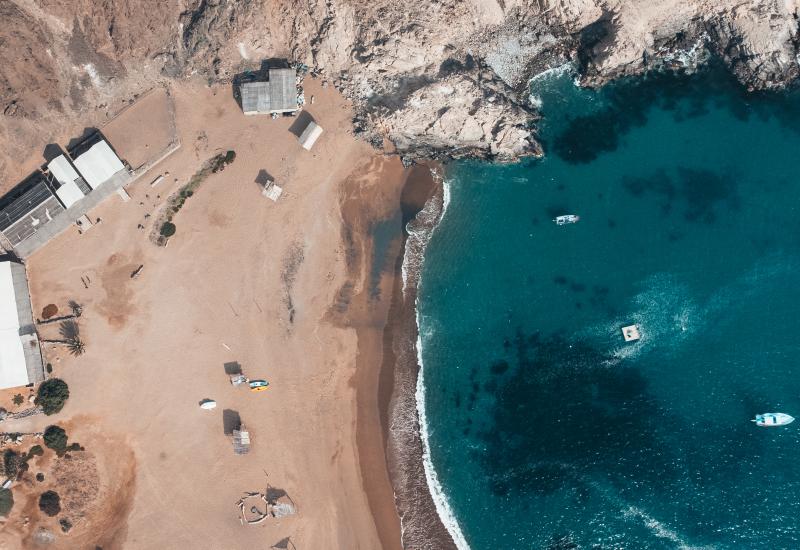Diving Indonesia's Komodo National Park
Starkly beautiful islands, dragons, volcanoes, azure waters, luscious reefs, and a huge and healthy biodiversity of underwater critters make diving the Komodo area of Indonesia a truly unforgettable experience.
Judy is an avid underwater photographer and traveler whose work has appeared in several dive publications. Judy also shares a comprehensive dive travel and photo blog.
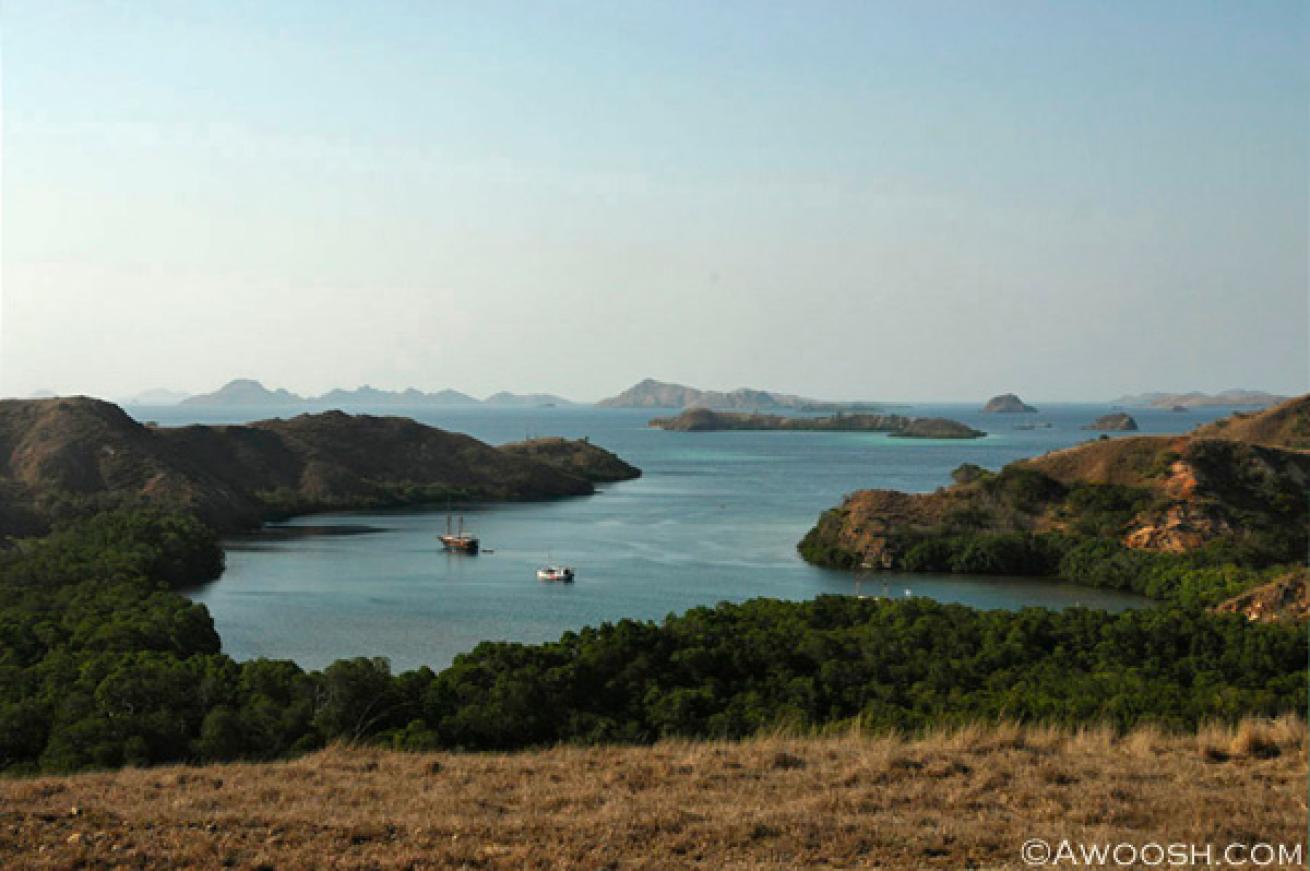
Judy G
After a hot sweaty hike up the hill on the island of Loh Buaya, in Komodo National Park, one is rewarded with this beautiful view. Loh Buaya is one of two Komodo dragon sanctuaries in the park where tourists can safely view these fearsome animals, with the other being located on Komodo Island.
Komodo National Park, deemed a UNESCO World Heritage Site since 1986, is comprised of three significant islands – Komodo, Rinca and Padar, and some of the coastal area of the large island of Flores (where the airport of Labuan Bajo is located – the embarkation point of many live-aboard boats). It also includes 26 smaller islands, and the waters that surround this entire area. It is approximately 220,000 hectares in size (land and water combined), is sparsely populated, and is legendarily beautiful, with epic marine biodiversity.
There is some land-based diving available out of the town of Labuan Bajo on Flores, but to really see Komodo at its best, it is recommended to dive it from a live-aboard platform. There are numerous boats, for all budgets, that do seasonal itineraries in Komodo.
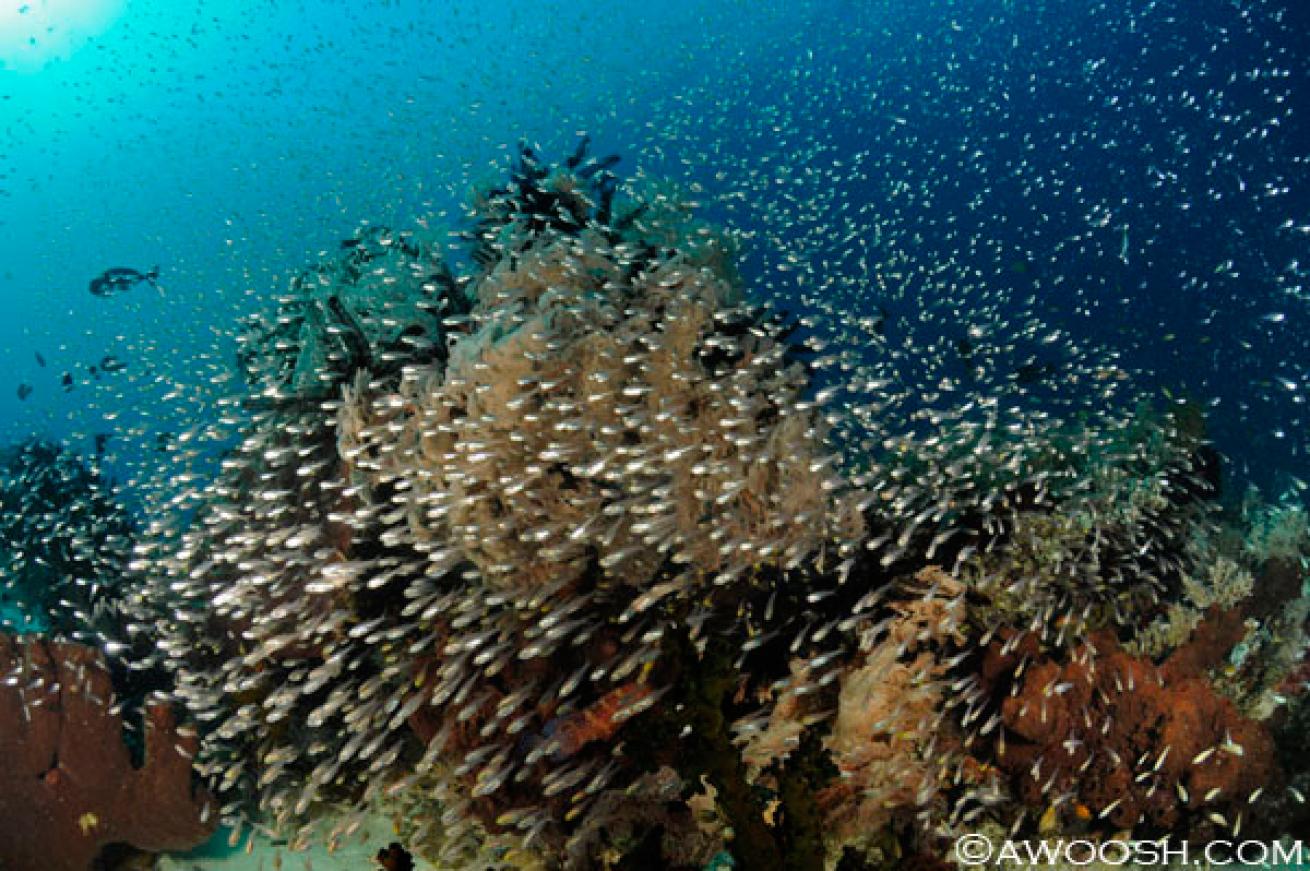
Judy G
In addition to its original intention to protect the endemic Komodo dragons, Komodo National Park has also become a marine-protected area. Although there are ongoing issues with poaching within the park, including highly destructive blast fishing in some locations, the waters are for the most part wonderfully fishy. Large schools of fish are viewable on many of the dive sites.
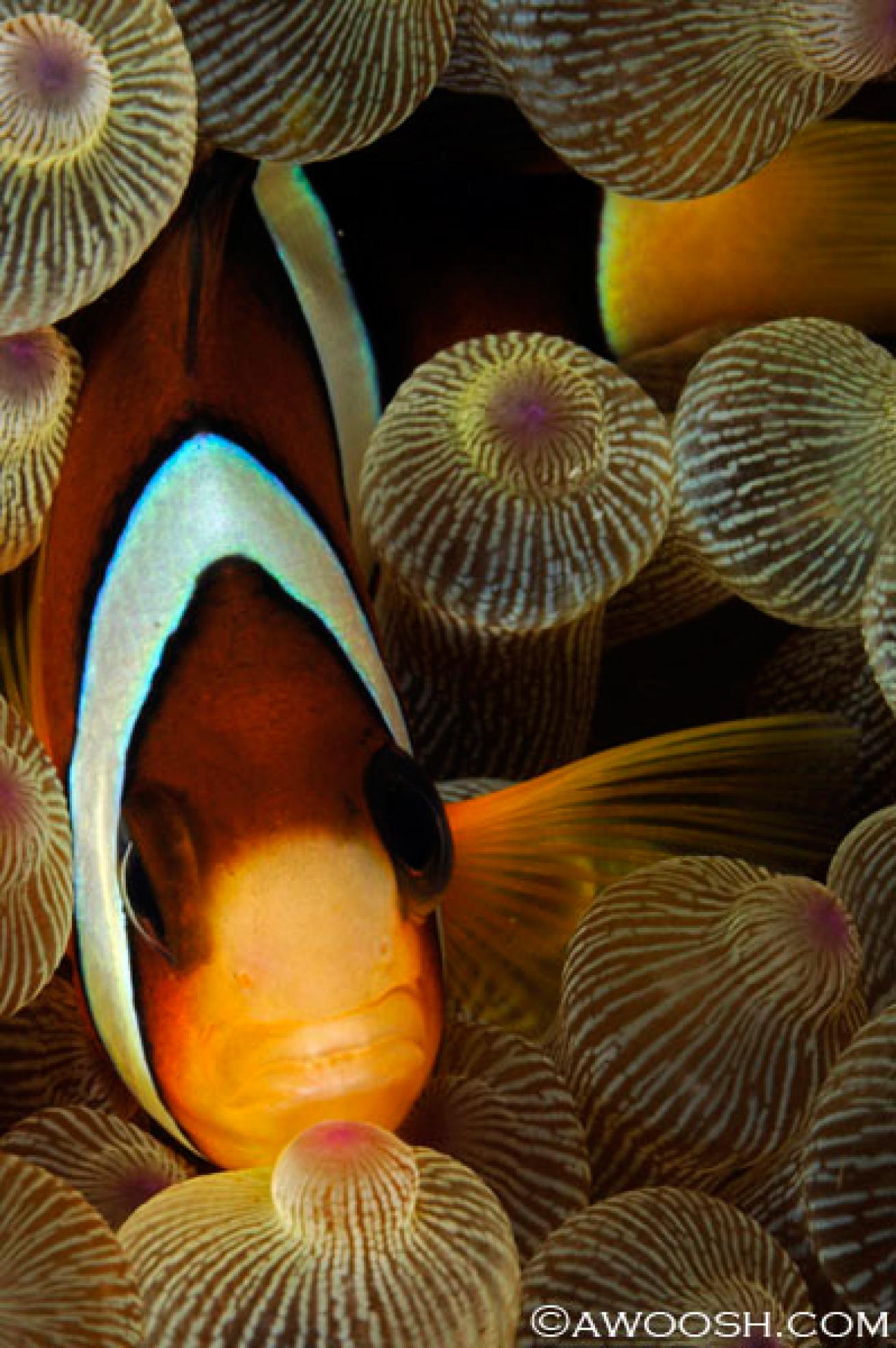
Judy G
The reefs of Komodo are lively and colorful. There are many varieties of the ever-entertaining anemonefish to be seen, including these Clark’s anemonefish (Amphiprion clarkii) – this one living in a bubble-tip anemone (Entacmaea quadricolor).
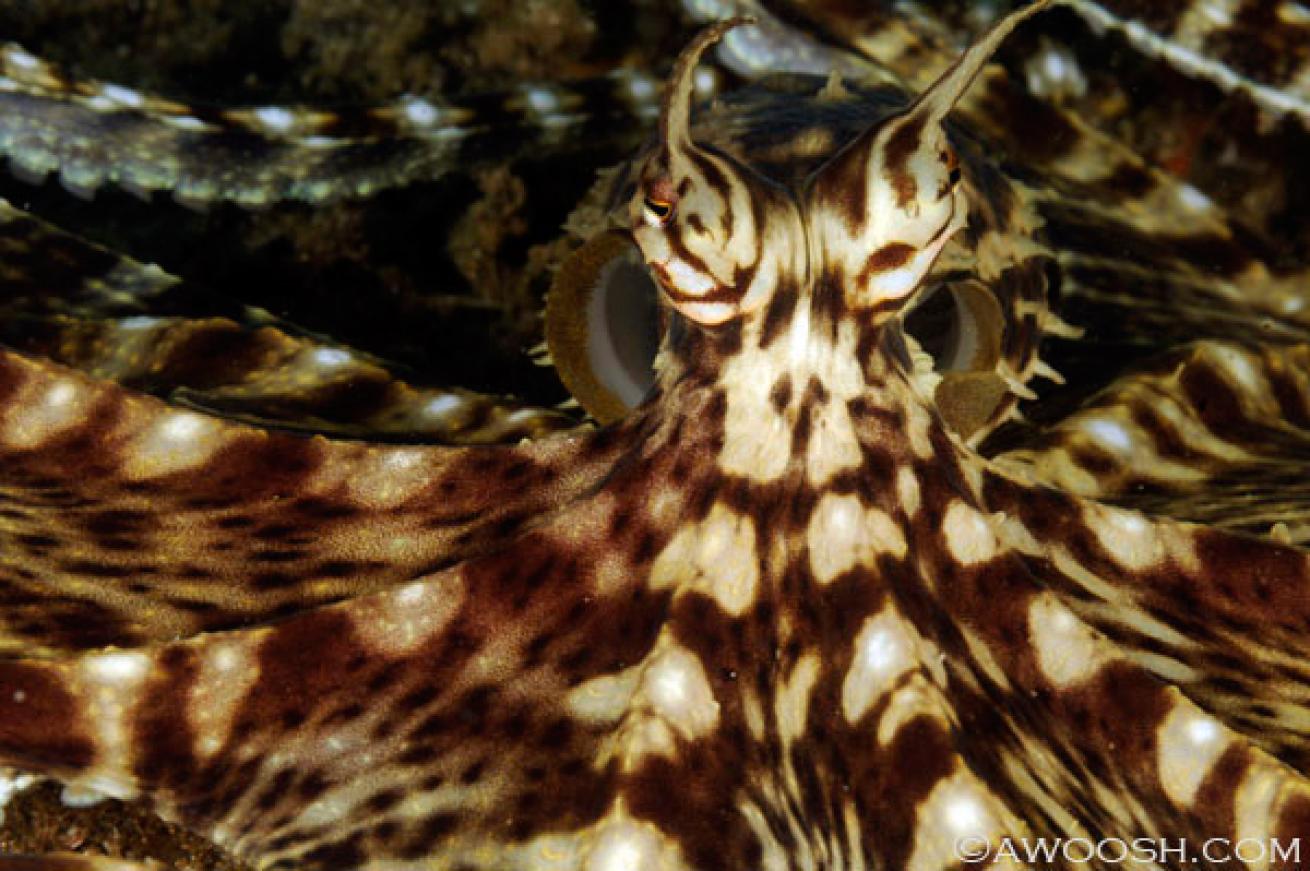
Judy G
The fascinating mimic octopus (Thaumoctopus mimicus) not only can change its colors (like its other octopus cousins), but it can actually mimic other species of animals. I’ve seen one all flattened out and light-colored, scooting across the sand, looking very much like a sole. They have been documented to take the form and coloration of several other sea creatures as well. These weird and wonderful octopi typically live in silt-bottomed shallow bays.
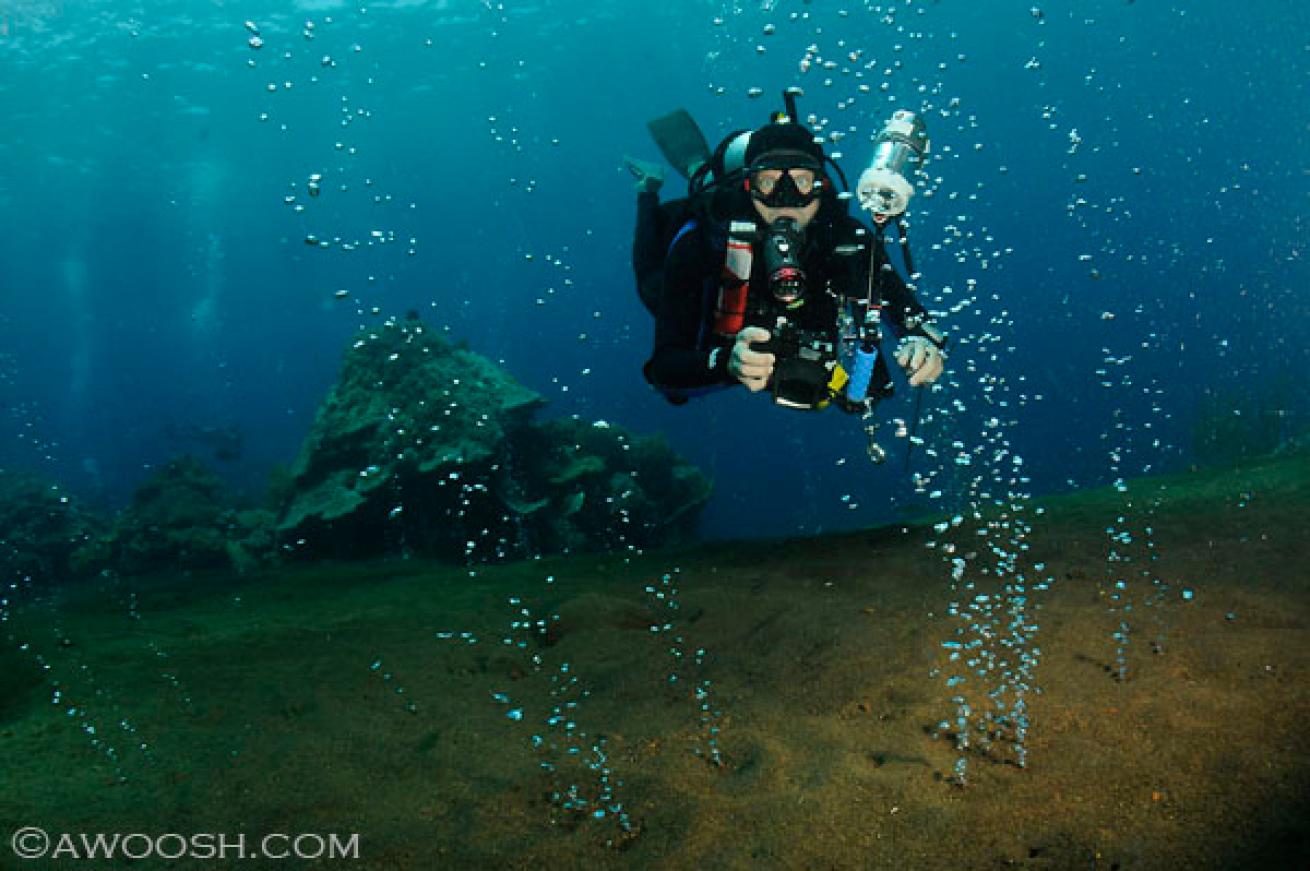
Judy G
Not technically in Komodo National Park, unique Sangeyang is a volcanic island, just to the north, and is often included in longer Komodo itineraries of live-aboard dive boats in the area. Sangeyang is an active volcano that continues to simmer. On "Hot Rocks" dive site, the bubbles percolate up through the reef from underwater vents, creating the woozy effect of champagne diving.
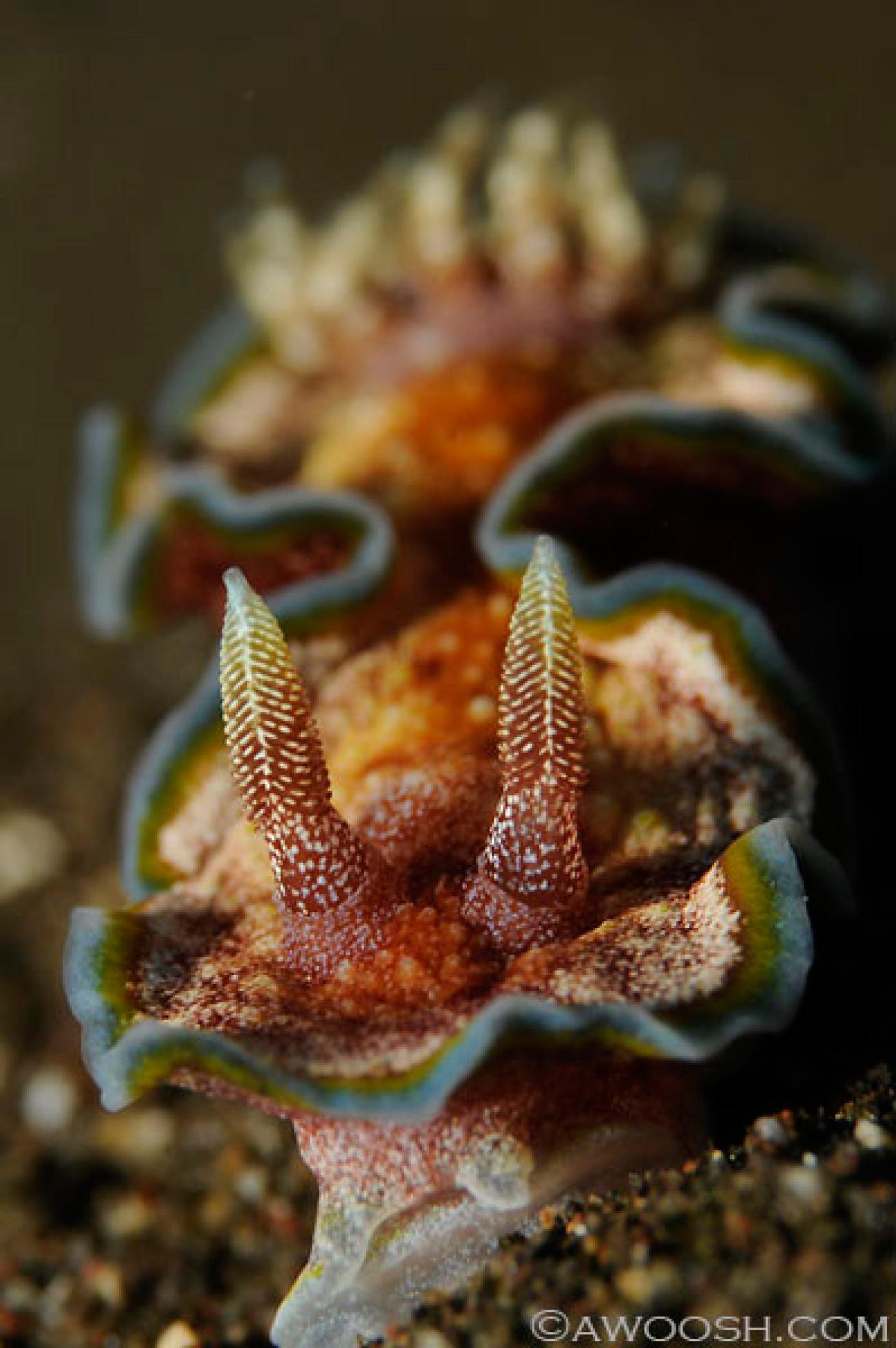
Judy G
With all the beautiful and fishy reefs, it is tempting to just hang back and soak in the big picture, but Komodo’s rich and varied macro life is worth focusing in on. This girdled glossosodoris nudibranch (Glossodoris cinta), which grows up to about 2 inches long, is just one of dozens, if not hundreds, of varieties of nudibranchs that can be spotted here.
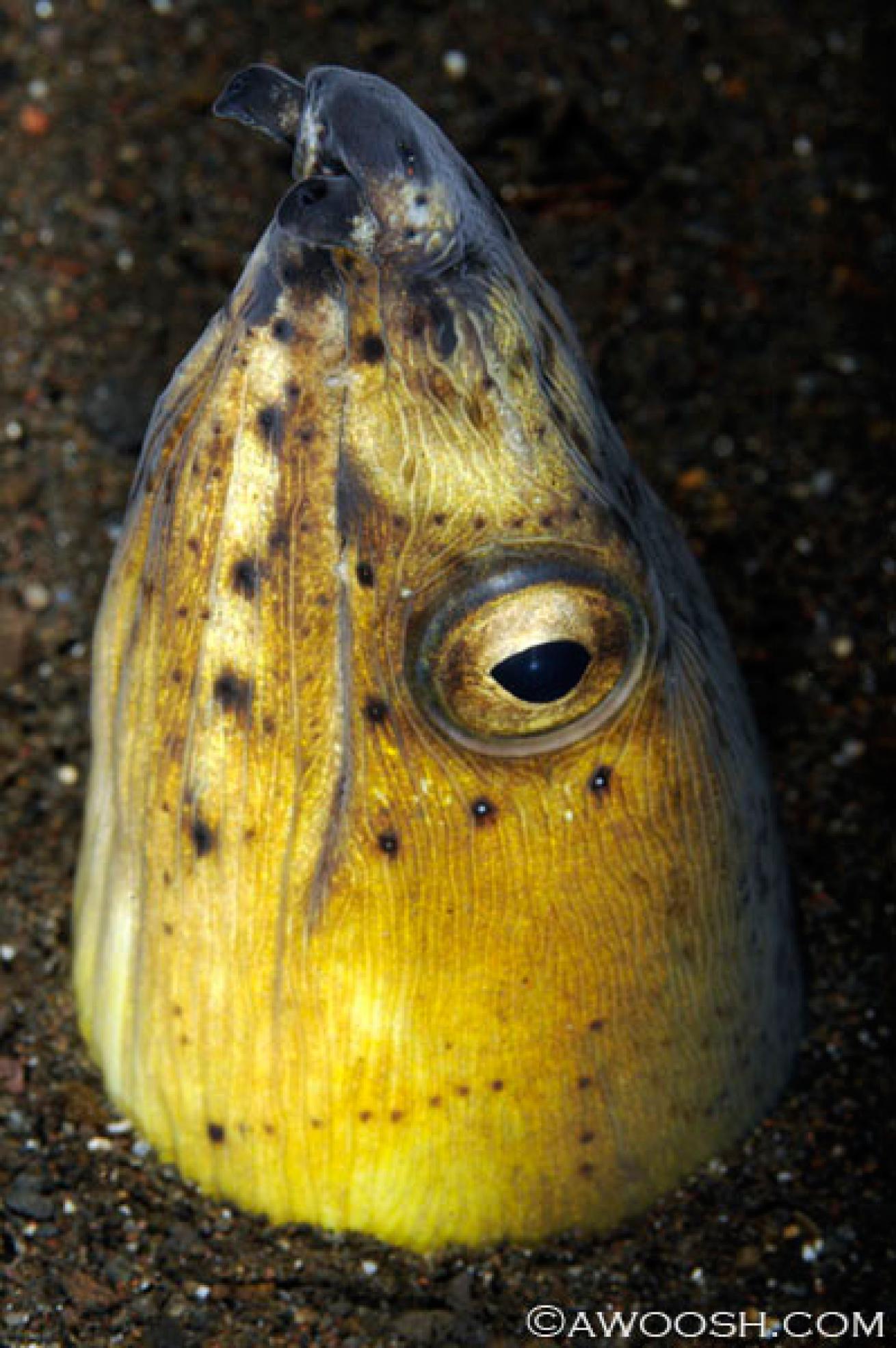
Judy G
This is the usual view of one of these weird snake eels. They burrow their long bodies down vertically into the silt, so all you will see is their heads poking up out of the muck like this. They are ambush predators, and as such remain very still, mimicking a bit of wood or other detritus, waiting for their prey to come by before they strike. I had quite a scare during a night dive when another snake eel, out of its lair and startled by my dive light, bolted straight at me from out of the dark. It was the first one I had seen out like that — I had no idea that they were up to 3 feet long.
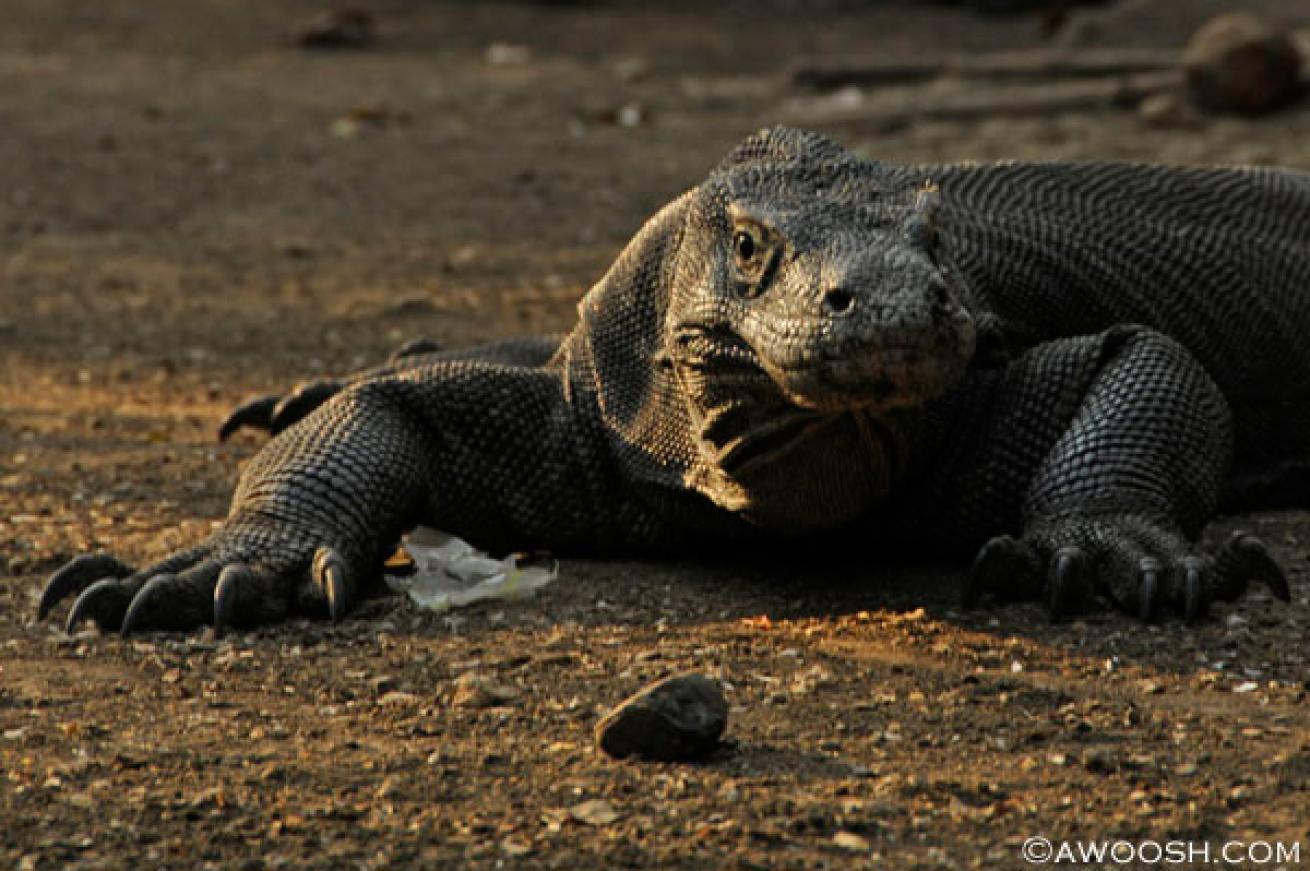
Judy G
Komodo dragons (Varanus komodoensis) are fearsome predators that have been known to attack, kill and eat humans. These big monitor lizards (they can weigh up to about 150 pounds) can run very fast for short distances. They are ambush predators — they lay in the weeds, waiting for some tasty tidbit to wander by, and then they strike, biting their victim. Not content to continue the attack until their victim (most often wild boar, goat, deer, monkey or water buffalo) is killed, they inflict the bite and deposit festering, nasty bacteria in the flesh of their victim. Then the dragons, using their long flickering tongue to "smell," track their prey, sometimes for days, as it sickens from the bite, and eventually dies. Then they consume it.
At the sanctuaries, several large dragons lounge around in the shade of the buildings, seemingly almost tame. But you can never let your guard down with these quick-footed predators. Park rangers are present to keep tourists safe from attack when doing a walkabout in the sanctuaries.
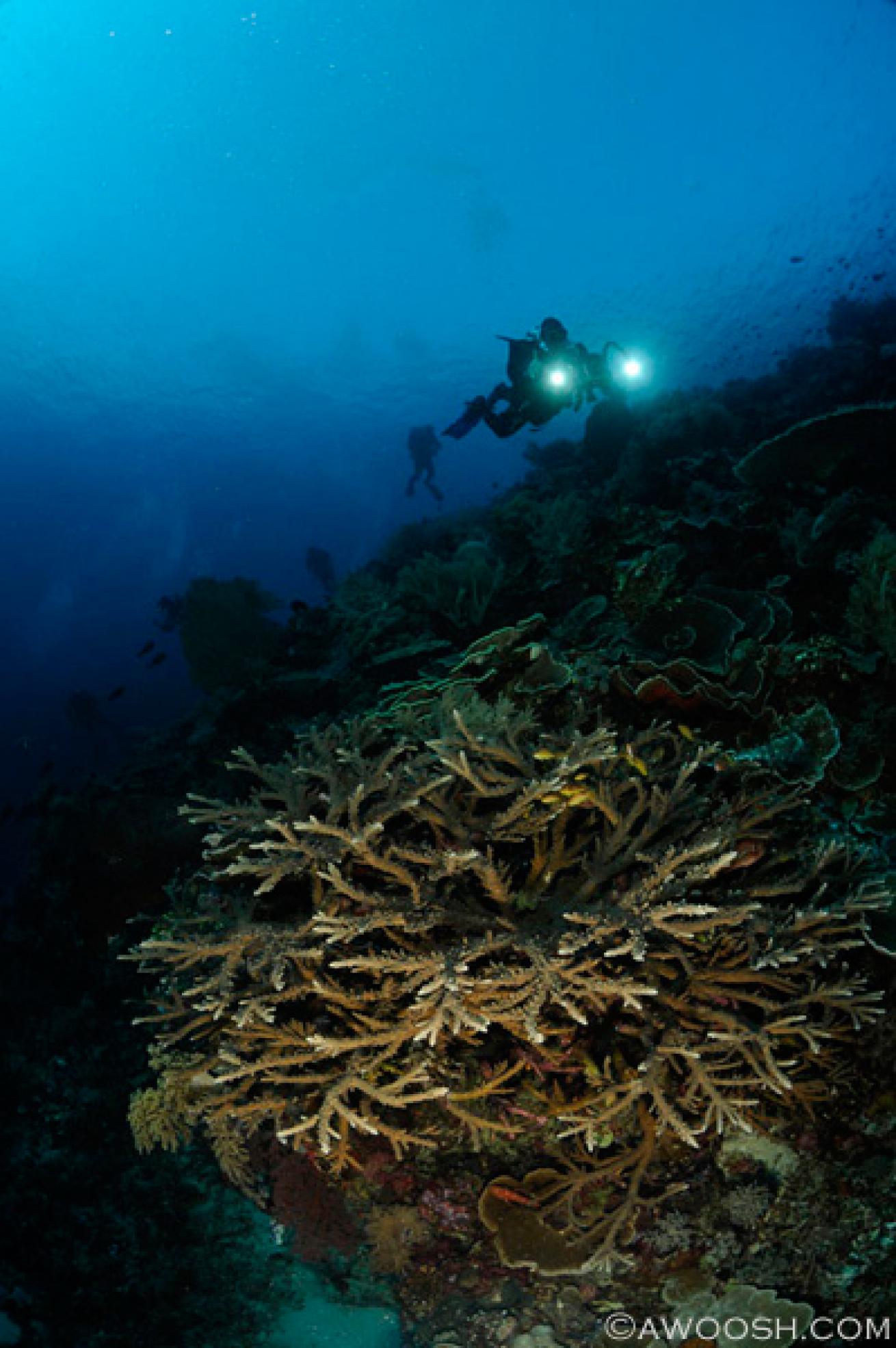
Judy G
Clear blue water and pristine hard-coral formations — Komodo’s got both, especially in the north islands. The visibility in the south islands tends to be less stellar (and the water can be significantly cooler), but the amazing biodiversity in that area more than makes up for it. Varying ocean currents that collide in Komodo explain the differences in localized biodiversity, water clarity and temperature, and also explain the sometimes very strong currents. Much of the diving in Komodo is best dived at slack tide to avoid Mr. Toad’s Wild Ride.
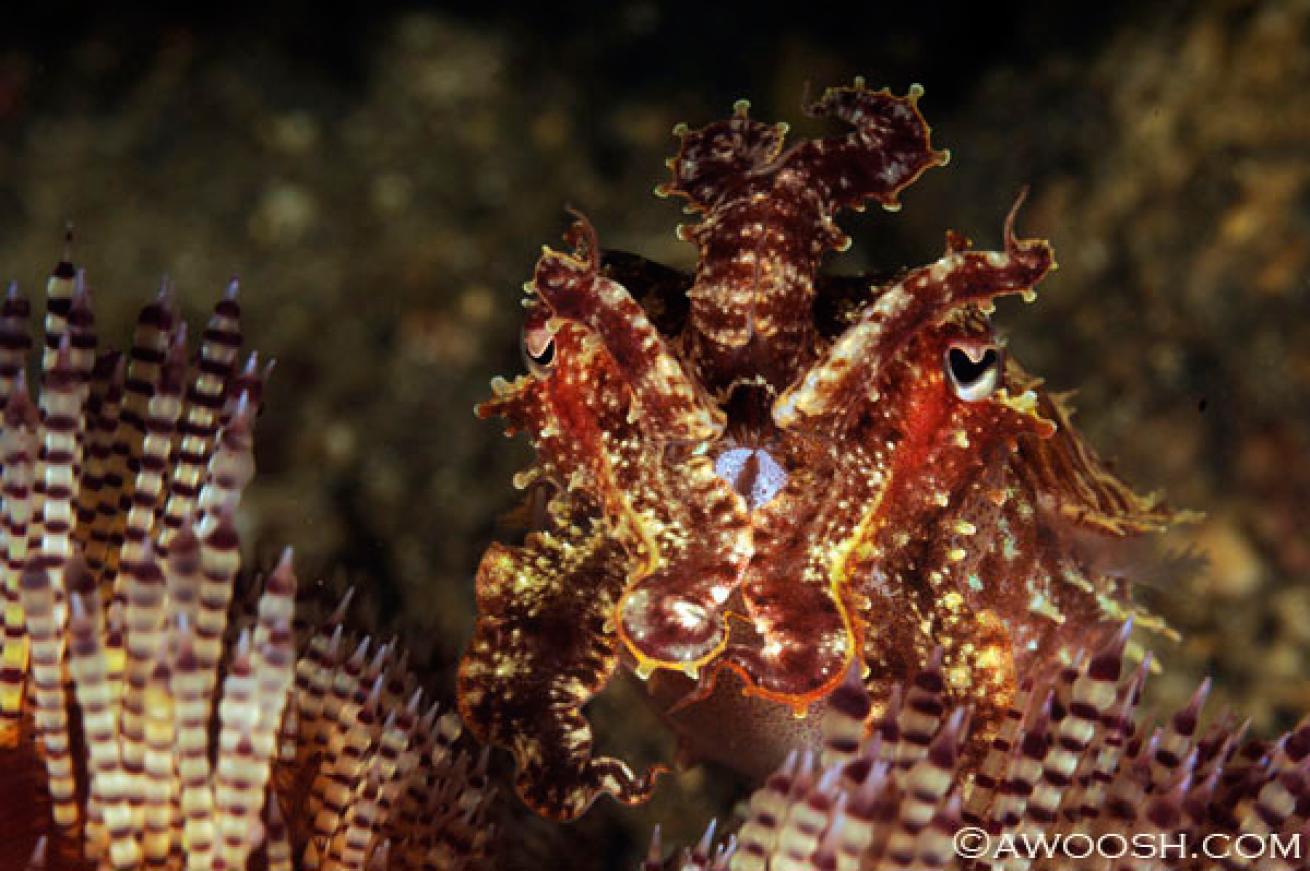
Judy G
These little crinoid cuttlefish (Sepia Sp 2) are great at blending in with their environment, which keeps them safe from predators, and also allows them to ambush their prey. This little member of the cephalopod family grows to about an inch-and-a-half long. It is hovering over a very colorful (and toxic!) fire urchin (Asthenosoma varium).
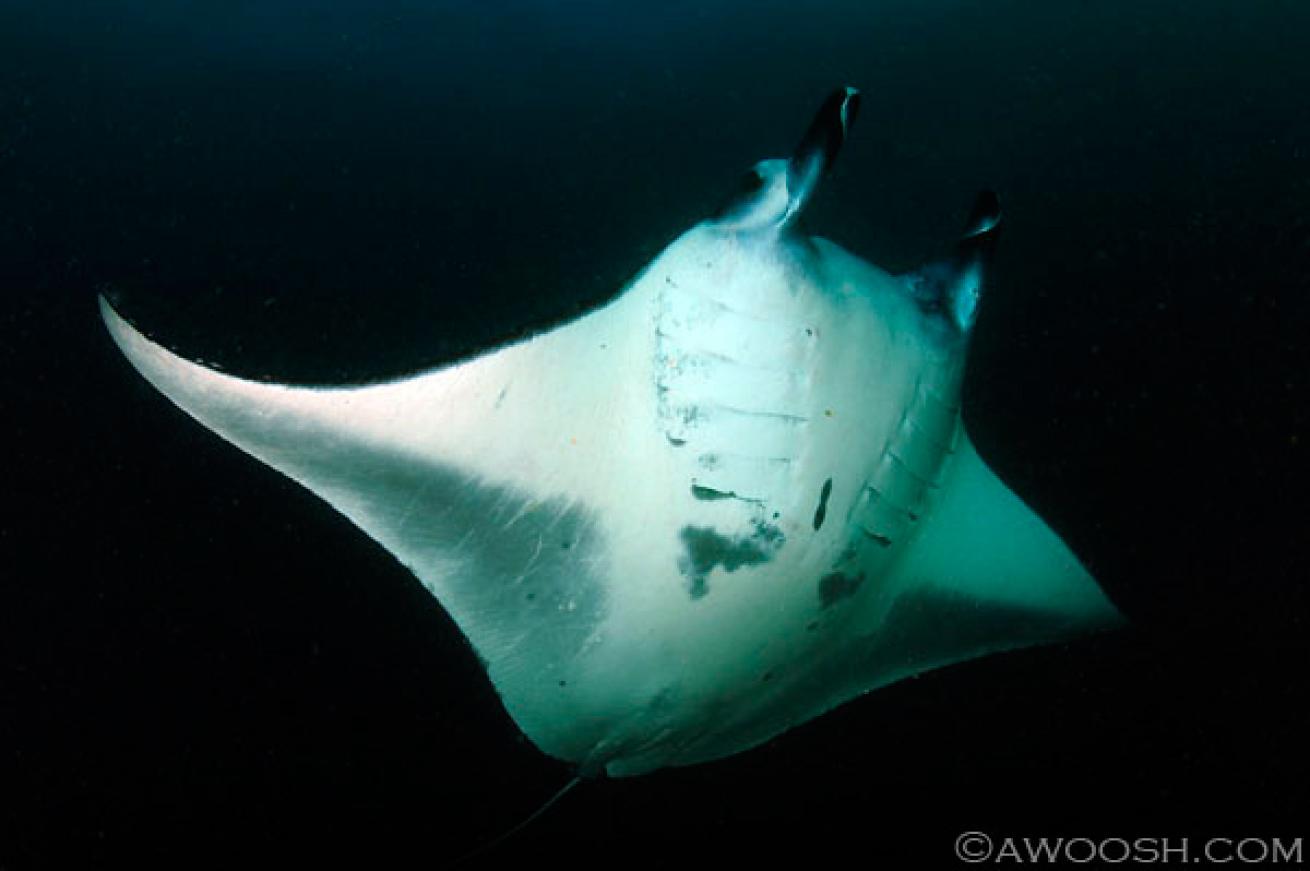
Judy G
It is always a thrill to see a majestic manta ray winging by. In Komodo, there are several locations where schooling mantas can regularly be seen. This image of a giant manta (Manta birostris) was taken in a murky current pass in the south islands of the park. It was just one of a squadron that thrilled us on a couple of early-morning dives we did there.
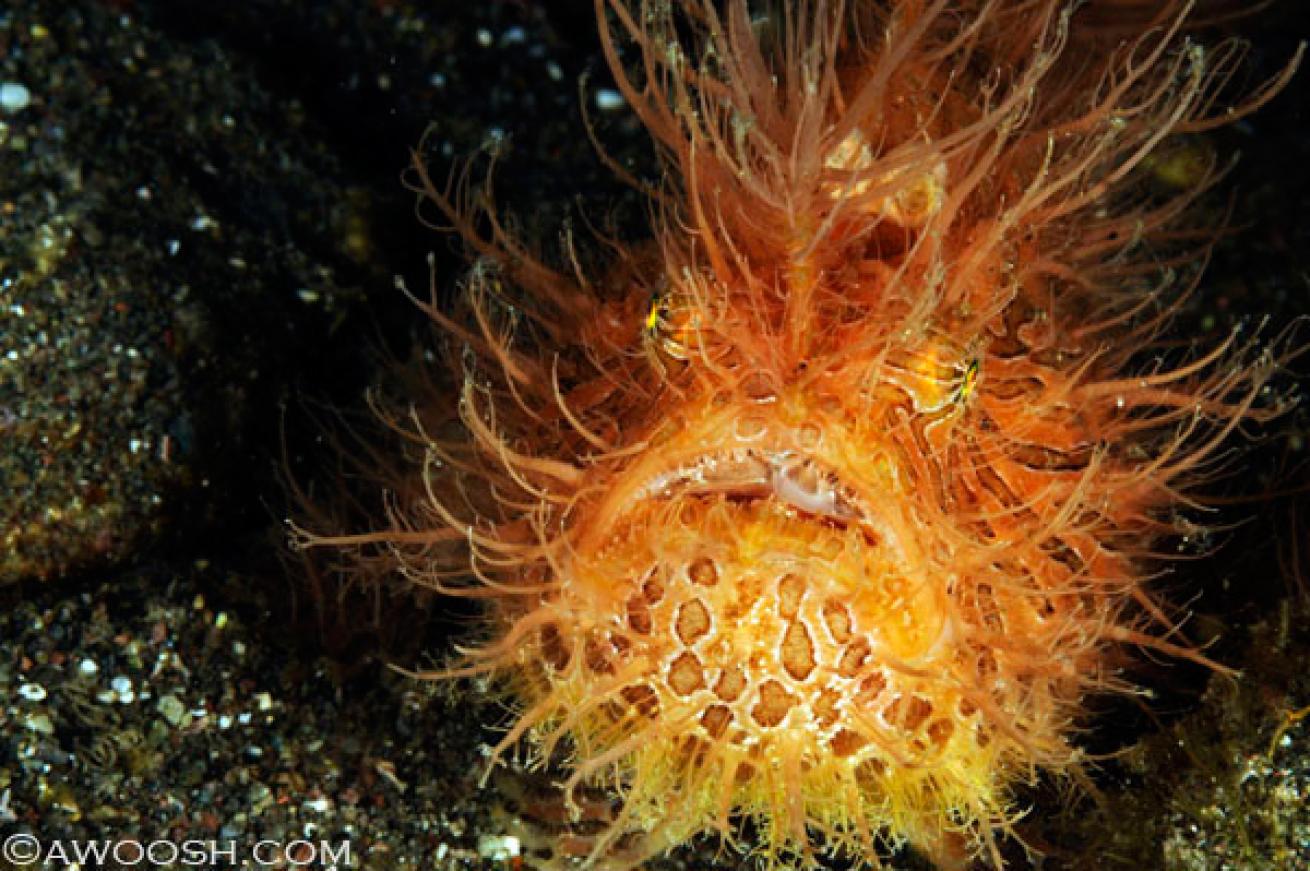
Judy G
Torpedo Alley, at Rinca Island in Komodo National Park, has been deemed by some to be the "Best Night Dive in the World." I am not sure I would agree with that, as I’ve done a few others that were spectacular for their own reasons, but it is a very critter-rich dive for sure. This striated hairy frogfish (Antennarius striatus) was just one of several very exciting finds.
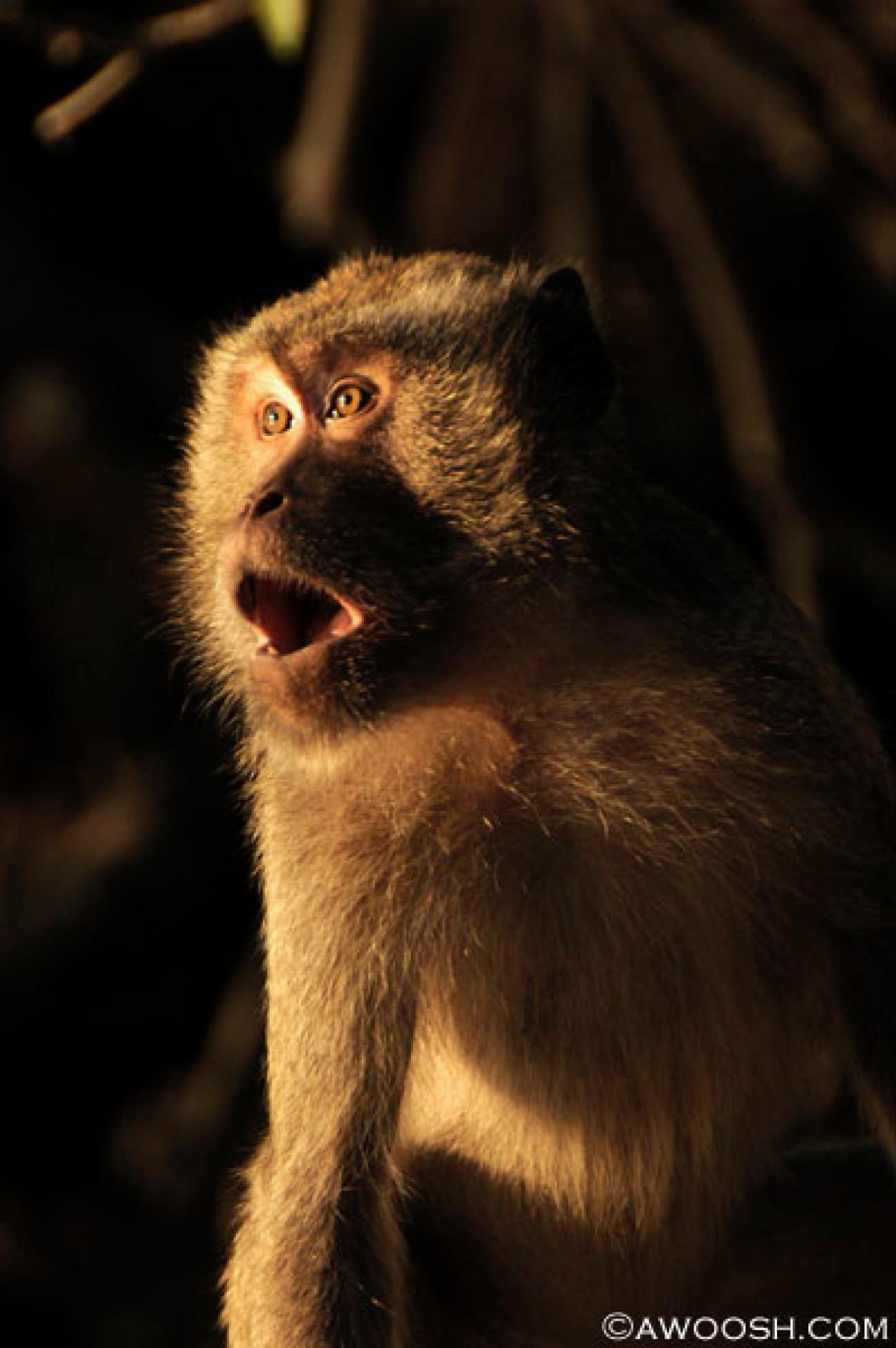
Judy G
Komodo isn’t just about the epic diving. The shore excursions and hikes that are available on various islands are also a fantastic way to connect with these wild, remote and beautiful islands. Just a short, one-hour flight from lush, highly developed and touristed Bali, Komodo truly feels like a world away.
Starkly beautiful islands, dragons, volcanoes, azure waters, luscious reefs, and a huge and healthy biodiversity of underwater critters make diving the Komodo area of Indonesia a truly unforgettable experience.
Judy is an avid underwater photographer and traveler whose work has appeared in several dive publications. Judy also shares a comprehensive dive travel and photo blog.




